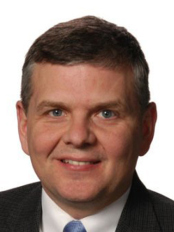
The 3rd Annual Global Automotive Lightweight Materials Detroit (GALM) congress will be held on August 20-21 in Detroit, Michigan. As OEMs seek to develop vehicle lightweighting strategies that will allow them to cost-effectively meet fuel economy targets, they are increasingly shifting their focus to incorporating mixed-material solutions at mass produced scales. The highly anticipated Ford F150 heralds the integration of lightweighting technologies into the vehicle with the highest volume of sales in North America for the last 36 years and is representative of an overall industry trend towards mass produced lightweight vehicles.
However, applying lightweight materials to mass produced vehicles comes with a fresh set of challenges. OEMs need to select the optimal combination of materials including aluminum, high-strength steel, composites, and magnesium, source them in the volumes and specifications required for high volume production, and then determine the optimal joining and casting techniques for mixed material manufacturing at scale.
To address these challenges, leading vehicle OEMs will be gathering in Detroit for the GALM congress to the share the latest advances in materials and manufacturing techniques that are having the biggest impact on reducing the cost of mass produced lightweight vehicles. Highlights Include: a Focus on Mass Production, Aluminum & Mixed Material Joining, Material Selection & Optimization, Corrosion Prevention, Vehicle Repair & Crash Performance, and Casting.
Interview with congress speaker, Craig Renneker, Ford

Craig Renneker, chief engineer – Component & Pre-Program, Transmission & Driveline Engineering at Ford, is one of the OEM speakers who will present at the Global Automotive Lightweight Materials congress. In his current role, he is responsible for the development of all new automatic and hybrid transmission programs within Ford, as well as all component engineering activities.
What are the main challenges you are currently facing at Ford in relation to lightweighting?
Delivering lightweight technologies to our customers at a good value. There are many great technologies out there that are simply too expensive for our market.
What is your background in lightweighting?
I have developed and launched 11 new automatic transmissions at Ford over the last 14 years. In each of these programs, we have set ourselves challenging weight targets and search the industry for viable, high-volume weight reduction technologies.
You will join GM and Chrysler on a ‘Lightweighting Opportunities Beyond The Body’ panel. How does collaboration like this help drive lightweighting?
We need greater scale and supplier participation in commercializing lightweight technologies. To the extent that collaboration enables this scale, it is in our interest.
How is Ford attempting to cost-effectively reduce weight at mass produced scales?
We continue to look at every technology to find the right combination of weight value and supplier availability.
Who are you looking forward to meeting and why?
I am looking forward to meeting suppliers who can bring me weight reduction ideas at the value and scale I need for high-volume transmission/driveline/axle programs.
What are you most looking forward to hearing about at the conference?
New technologies and new applications of existing technologies in high volumes.
Why is Ford choosing to be involved in Global Automotive Lightweight Materials Detroit?
This gives me an opportunity to exchange ideas with others in my industry and stay abreast of the latest technologies.
This will be my 3rd GALM conference. I encourage both suppliers and OEMs to participate to enable us to share ideas and learn about new lightweight technologies. I need new ideas to incorporate into Ford’s next generation of transmission and driveline products.
